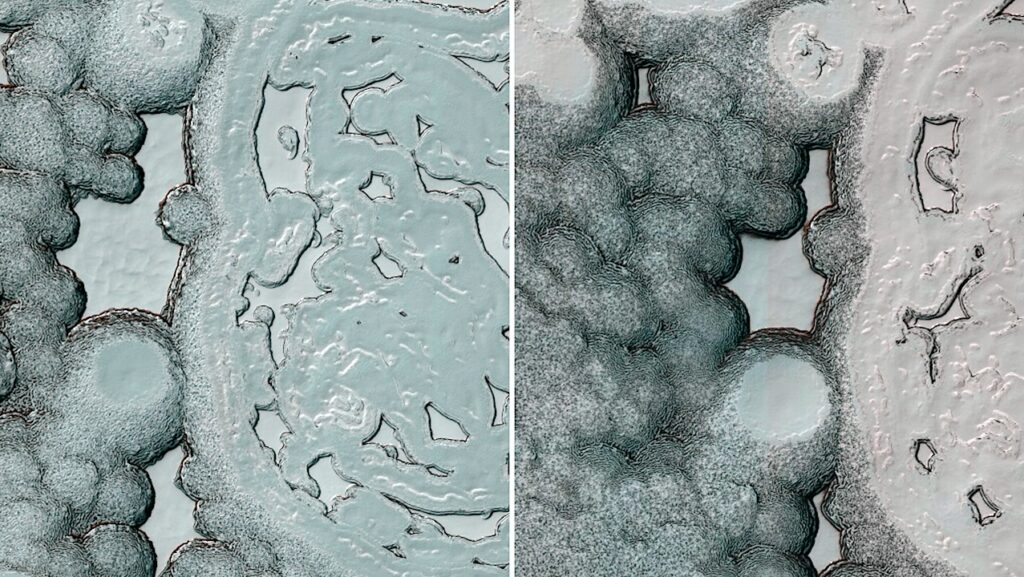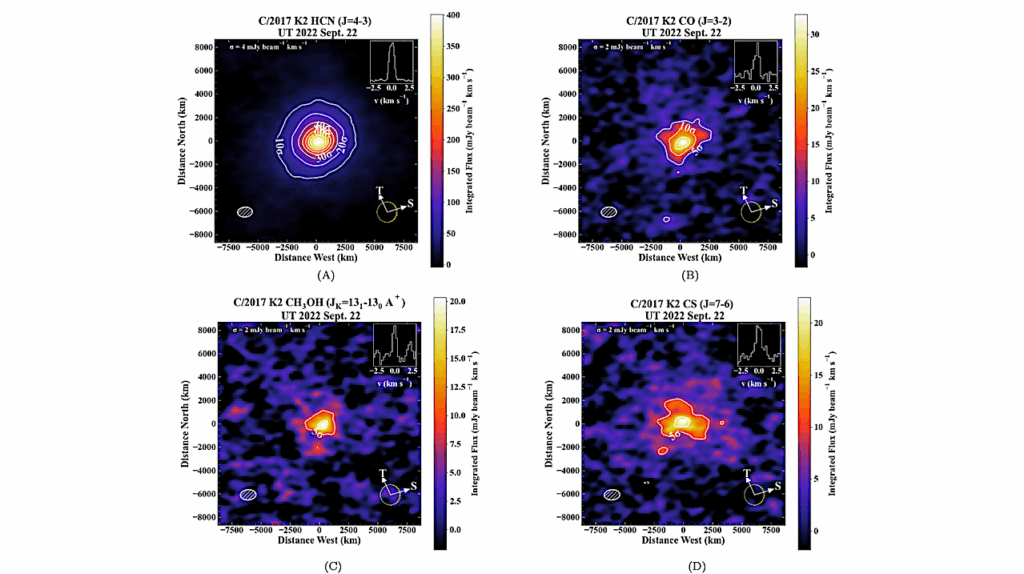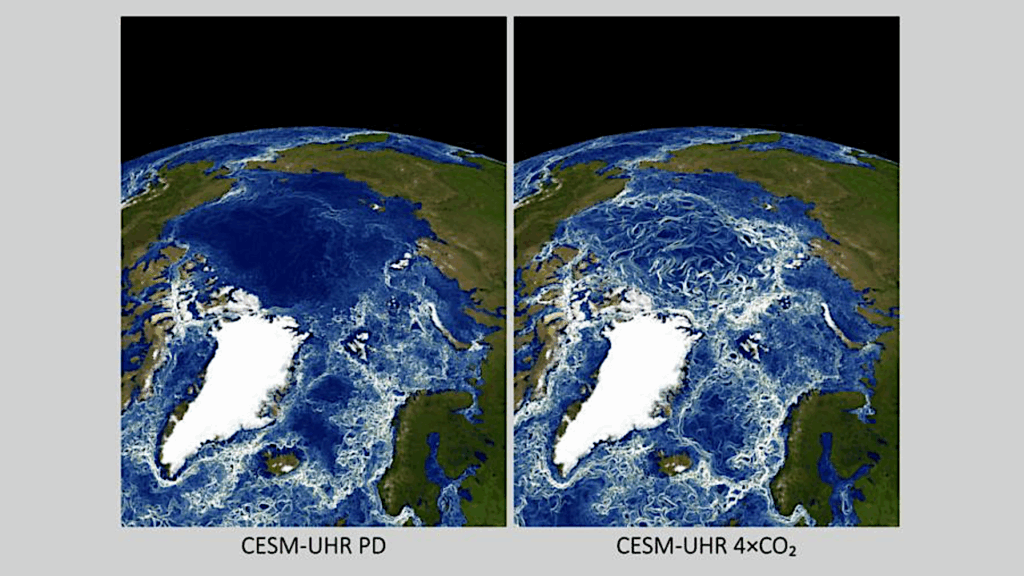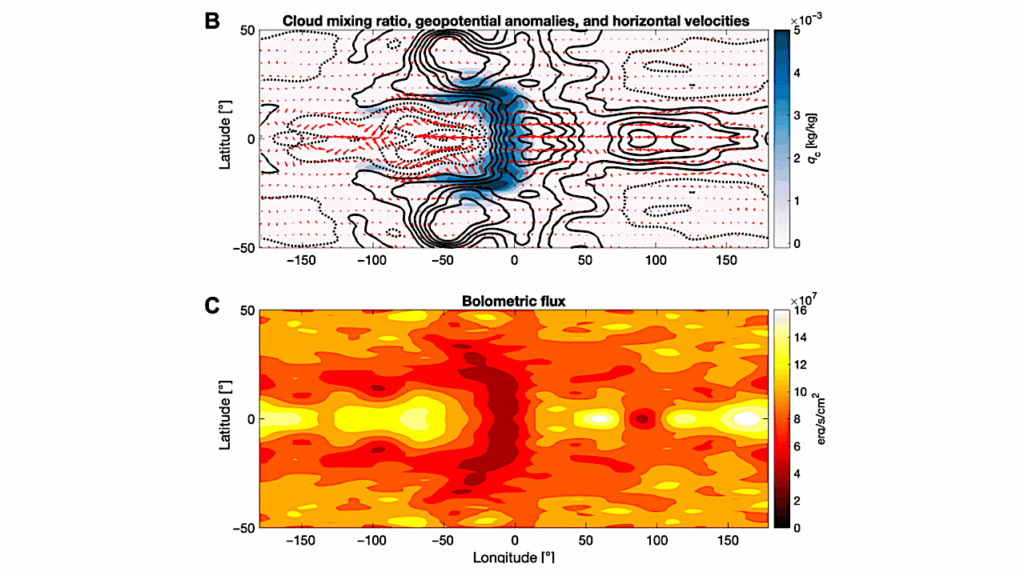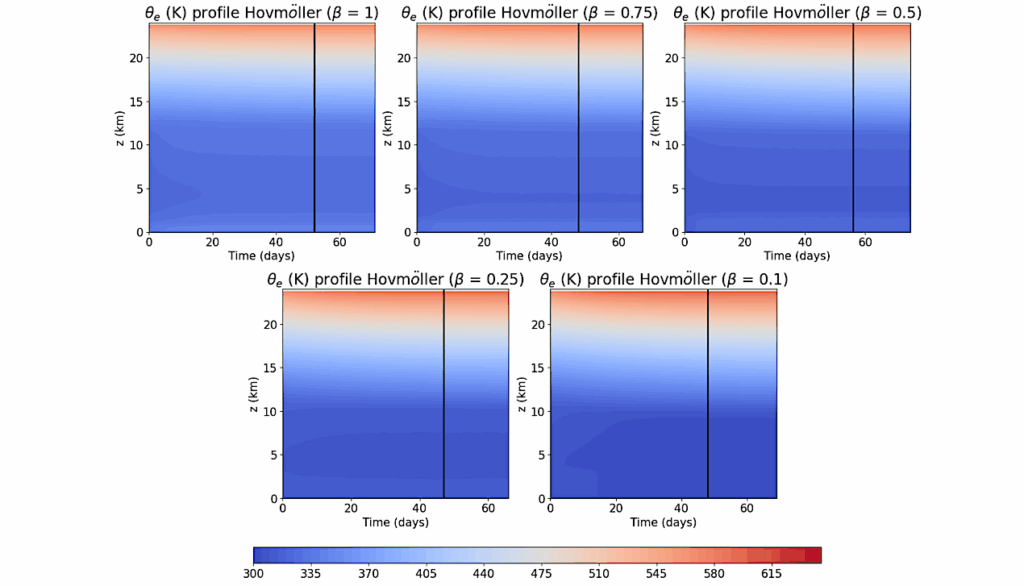Is An Ocean Lurking Beneath Miranda?
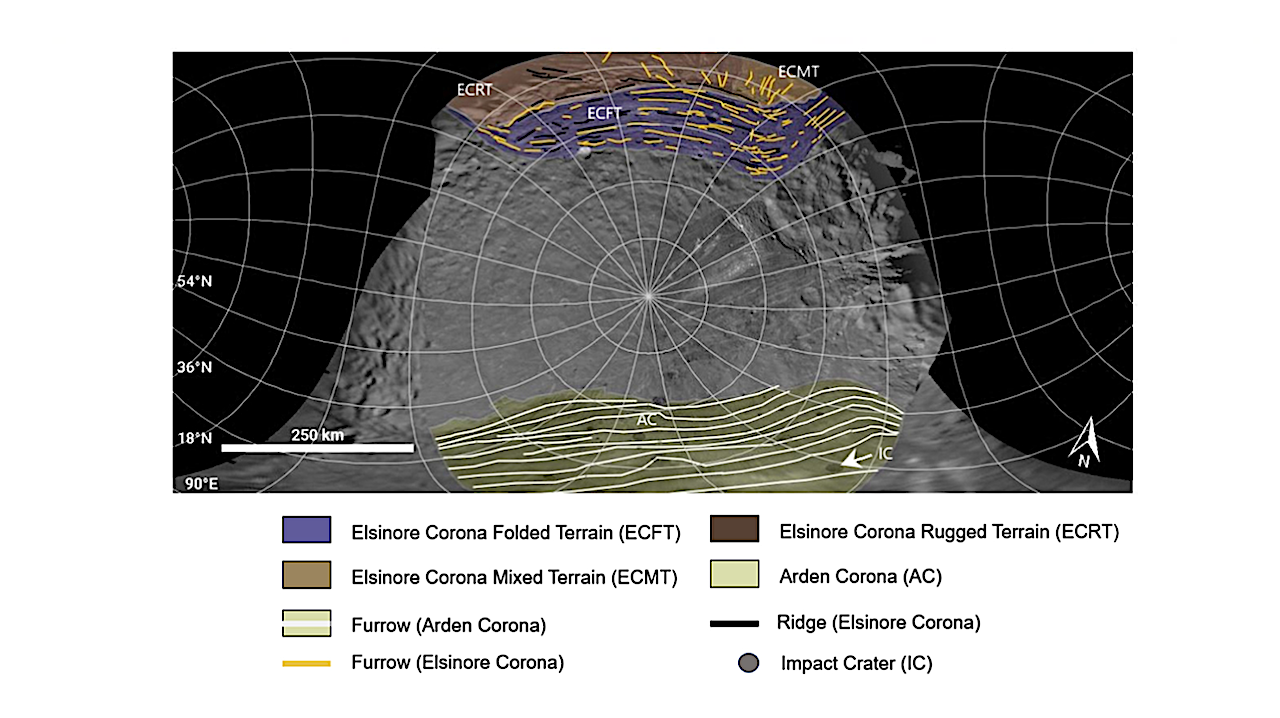
Uranus’s moon Miranda might have once harbored an ocean beneath its surface, according to research published in the Planetary Science Journal. The work was led by graduate student Caleb Strom of the University of North Dakota. Planetary Science Institute Senior Scientist Alex Patthoff is a co-author.
Miranda is the smallest spherical moon of Uranus and its closest companion. It boasts giant fault canyons, ridges, troughs and fractures, and its surface looks like haphazard patchwork. Scientists think these dramatic surface features are primarily shaped by the push and pull of Uranus’s gravity as the moon zips around, a phenomenon called tidal flexing.
“Miranda sits close to Uranus and gets pulled more strongly compared to other moons,” Patthoff said. “It also doesn’t orbit exactly in line with the other moons. It’s tilted about five degrees from the equator, which is enough to add an extra wobble to it. As it orbits, it’s going from soccer ball-shaped to football-shaped and back, and heats up internally, potentially providing a source for liquid water and creating disturbances on the surface.”
Patthoff led the efforts to model what might be happening beneath the surface of Miranda to shape its surface, and helped guide Strom through the interpretation of those models. Patthoff and his co-authors were especially interested in whether the tidal stresses were enough to break the icy surface of Miranda, which is what appears to be happening.
“We found that it’s possible, but you need a much deeper ocean that I was expecting to do that,” he said. “When you have an ocean under the ice, the water sloshes around more easily and pushes on the ice shell and adds extra stresses to it,” says Patthoff.
They found that Miranda’s ocean likely existed 100 to 500 million years ago – which is relatively recent in geologic time scales – and would have been at least 62 miles deep beneath an icy crust no more than 19 miles thick. Miranda is only 292 miles wide, so the ocean would have filled almost half of the moon’s body.
Because of its small size and old age, scientists didn’t expect Miranda to harbor an ocean. Instead, they assumed any residual heat from its formation would have dissipated long ago. Researchers can’t yet know if the ocean is still there. “In order to know if there’s an ocean today, we’d have to go and visit the moon,” Patthoff said.
Constraining Ocean and Ice Shell Thickness on Miranda from Surface Geological Structures and Stress Modeling, The Planetary Science Journal, (open access)
Astrobiology


